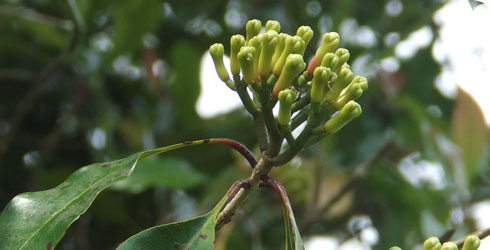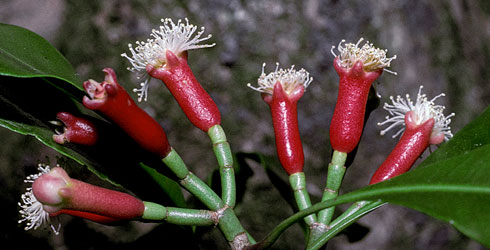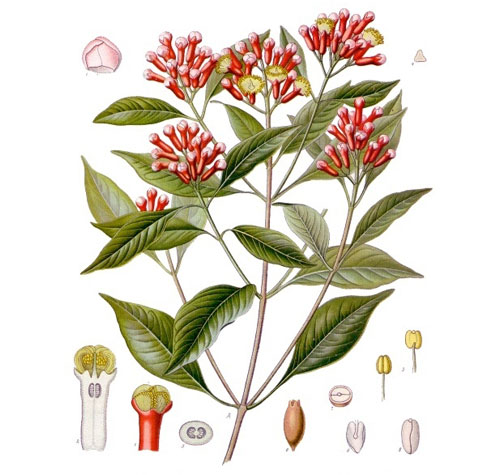Syzygium aromaticum (clove)
Syzygium aromaticum is a tree species commonly known as laung, clove tree and caryophyllum. It belongs to the Myrtaceae family and is commercially used as a source of cloves - a well known spice.
Cloves are dried unopened flower buds of Syzygium aromaticum.
Their common English name is derived from a Latin word clavus, which means ‘nail’ - this refers to the shape of the flower buds.
The buds have an aromatic odour and a pungent taste.
The first recorded use of cloves was by the ancient Chinese. Visitors speaking to the Emperor in court had cloves in their mouths to avoid offending him with their bad breath.
Species detail
-

Taxonomy
Find out how to identify the Syzygium aromaticum tree.
-

Distribution
Discover where you might come across the clove tree.
-

Biology
Cloves are a pungent, hard, brown, nail-shaped spice when they reach the shelves. But how do they appear on the tree, and how are they collected?
-

Economic uses
Syzygium aromaticum has many uses. Find out how its oil and buds are used to treat a range of ailments.
-

References
Get reference material for Syzygium aromaticum.
Images

Clove tree.
© Samuel Heap
Dried cloves.
© Don Herbison Evans
Live clove buds.
© Timothy Motley
Syzygium aromaticum on tree.

Drawing of clove tree.
© Franz Eugen Köhler, Köhler's Medizinal-PflanzenAuthor
Ranee Prakash
A word from the author
"The clove is a very common spice condiment used in Indian cooking - you will find this in every Indian household. People also use it in garam masala (spice mix).We use it in curries as a carminative and also as a mouth freshener. You even find it in restaurants - when they give you the bill, they serve it in a plate along with fennel seeds. It is also used in betel leaves ('paan' - people chew this with lime, rose petals and catechu) and has lots of medicinal properties: a famous one being clove oil used as a dental analgesic."
Toolbox
Glossary
Carminative
From the Latin carminare - to cleanse. A soothing medicament that acts by relieving stomach and intestinal pain.
Hypanthium
Floral structure in which the sepals, petals and stamens are fused together.
Laterite
Soil rich in iron and aluminium and formed in hot and wet tropical areas.
